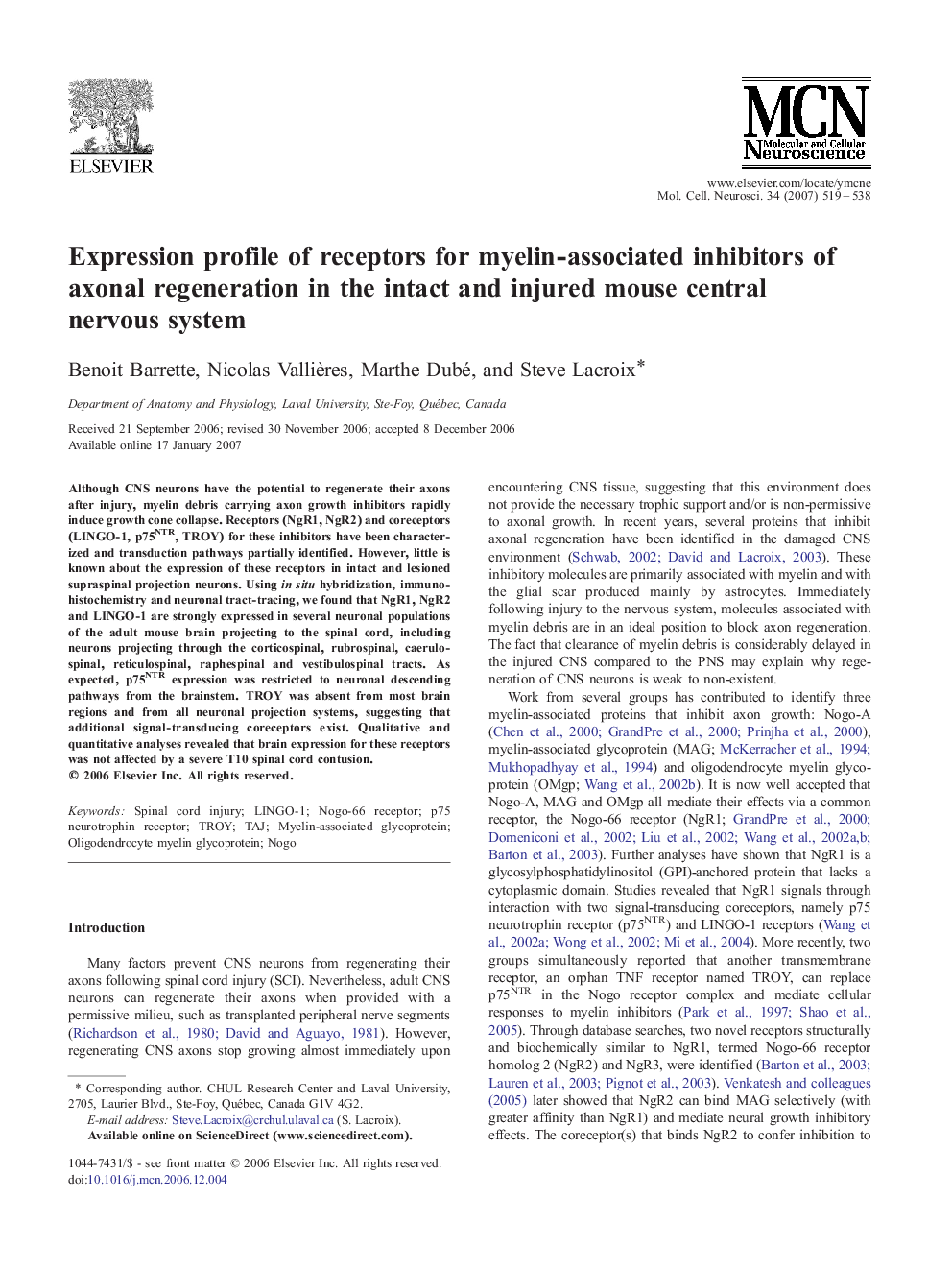| Article ID | Journal | Published Year | Pages | File Type |
|---|---|---|---|---|
| 2199505 | Molecular and Cellular Neuroscience | 2007 | 20 Pages |
Although CNS neurons have the potential to regenerate their axons after injury, myelin debris carrying axon growth inhibitors rapidly induce growth cone collapse. Receptors (NgR1, NgR2) and coreceptors (LINGO-1, p75NTR, TROY) for these inhibitors have been characterized and transduction pathways partially identified. However, little is known about the expression of these receptors in intact and lesioned supraspinal projection neurons. Using in situ hybridization, immunohistochemistry and neuronal tract-tracing, we found that NgR1, NgR2 and LINGO-1 are strongly expressed in several neuronal populations of the adult mouse brain projecting to the spinal cord, including neurons projecting through the corticospinal, rubrospinal, caerulospinal, reticulospinal, raphespinal and vestibulospinal tracts. As expected, p75NTR expression was restricted to neuronal descending pathways from the brainstem. TROY was absent from most brain regions and from all neuronal projection systems, suggesting that additional signal-transducing coreceptors exist. Qualitative and quantitative analyses revealed that brain expression for these receptors was not affected by a severe T10 spinal cord contusion.
